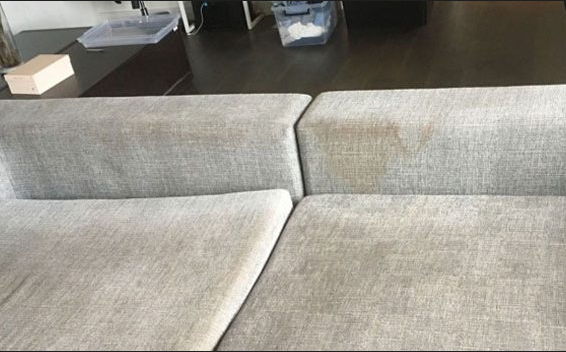The Link Between Dirty Upholstery And Respiratory Issues
You have always become comfortable and spend most of the time on your sofas, couches, and other upholstered furniture. Upholstery is fixed on your sofas and other upholstered furniture. But when this upholstery goes older, it becomes a danger to your family’s health due to its dirtiness. This is because, in addition to dust and dirt, different types of bacteria, virus, and other allergens attack it and remains there. This results in various types of respiratory and other allergies and diseases. Sometimes, we overlook these important issues. In this blog, we describe the link between dirty upholstery and respiratory issues and how to deal with them in detail.

The Link Between Dirty Upholstery And Respiratory Issues
Various contaminants present in your upholstery become a potential danger to your family’s health and they may cause many types of respiratory issues:
- Dust and allergen accumulation: Dust particles contain skin flakes, outdoor particles, and pet dander in combination get settled down on the surface of the upholstery. When disturbed, these particles become airborne and infect family members. Dirty upholstery due to the accumulation of dust and allergens contributes to respiratory issues.
- Bacteria and viruses: Dirty upholstery may possess harmful bacteria and viruses. When your hands or any body part comes in contact with this upholstery, these pathogens enter your body and also into your respiratory system, thereby increasing the risk of respiratory infections.
- Allergic reactions: Many people have allergies to certain types of fabrics used in upholstery. When this upholstery becomes dirty it causes severe allergies in those people. It can range from mild symptoms like sneezing and itching to severe reactions that ultimately affect the respiratory system.
- Impact on pre-existing respiratory conditions: The individuals have some problems related to the respiratory system like asthma or any chronic obstructive pulmonary disease (COPD) when exposure to soiled upholstery may worsen their symptoms. The dust particles present in the upholstery can trigger inflammation and may exacerbate breathing difficulties.
- Mould and mildew growth: Mold and mildew can grow immediately not only in damp and moist places but also in dirty places and upholstery. It becomes a breeding ground for them where they grow and spread diseases. Their spores are airborne when inhaled causing various types of respiratory-related issues like wheezing, coughing, and even asthma attacks in susceptible individuals.
- Volatile organic compounds (VOCs): Dirty upholstery may absorb certain chemicals along with dust particles such as flame retardants and adhesives. They release volatile organic compounds (VOCs). These chemical compounds irritate the respiratory tract and produce symptoms like dizziness, headache, and breathing difficulties.
- Pet dander and hair: Your upholstery may get dirty due to the dander and hair of your loving pets especially if your furry companions sit or lie on this furniture. It causes allergic reactions in the respiratory tract more frequently in the person who is sensitive to it.
These show the link between dirty upholstery and respiratory issues which should be known to people.
Tips For Prevention And Maintenance Of Dirty Upholstery
Whether it is a sofa, a couch, or a reclining chair, you have several cherished memories with it. It brings character to your home and becomes part of your daily routine as you are habitual of it because it is the only one that provides you comfort after a hard day at work. But it is your responsibility to maintain it in a proper condition. So, here are some of the helpful tips for the prevention and maintenance of your dirty upholstery:
- Regular cleaning: If you want to reduce the dust, allergen, and other contaminants buildup in your upholstery then regular cleaning is essential. You can either do it by vacuuming with a HEPA filter that effectively removes surface particles or you can hire professionals that can target deeper stains and dirt.
- Humidity control: Mold and mildew grow in areas having high humidity levels. If you maintain optimal indoor humidity levels then it prevents the growth of mold and mildew. It can be done with the help of dehumidifiers.
- Use of protective covers: For maintaining a cleaner environment, you should use removable and washable protective covers that create an additional barrier against dirt and allergens.
- Proper ventilation: For reducing respiratory irritants, adequate ventilation is a crucial factor that improves air quality by reducing indoor air pollution. So, you should provide proper ventilation inside your home.
All these tips proved to be very helpful in maintaining your dirty upholstery.
Conclusion
Due to the accumulation of dust, mould, mildew, allergens, bacteria, and VOCs, dirty upholstery has a major impact on your respiratory tract. The link between dirty upholstery and respiratory issues underscores the importance of regular cleaning and proper maintenance. You can use the given tips to reduce the risk of respiratory problems and promote a healthier living environment. You can also hire professional upholstery cleaners to maintain and clean your upholstery.
Published on: December 19, 2023

